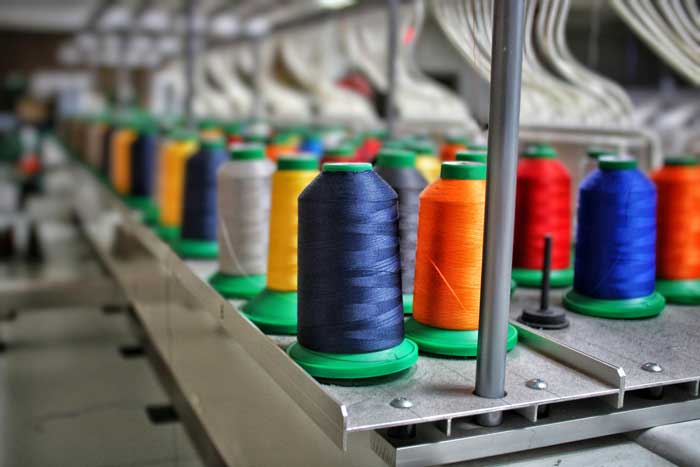
Boosting India’s Textile Sector Competitiveness
Upgrading skills, investing in research and development and supportive policy reforms are crucial steps in the journey to become successful, says Dr S K Sundararaman.
India is undoubtedly a global prominent player in textiles and clothing sector, the second largest employment provider of the nation and a key contributor to the exchequer. Despite this industry’s performance being below the expected numbers, witnessing stagnation both in export and domestic front for nearly a decade, its share of global exports is around 5 per cent. While global exports of textiles and apparel have grown at a compound annual growth rate of 3.5 per cent in the last five years (2019-2023), Competitors viz, China, Vietnam and Bangladesh have also shown remarkable success. India’s export during this period has grown at the rate of 0.8 per cent only.
The global textile and apparel industry is currently facing major trends viz., sourcing shifts and new regulatory requirements. Indian textile and clothing Industry has to adapt to the shifting trends by investing carefully by taking into account not only cost factors but also trade agreements and geopolitical risks. These structural challenges are in addition to the business challenges like disruptions of the supply chain, rising input costs, price pressure, etc. It is important for the industry to prepare for this new normal as soon as possible in order to churn these challenges and create opportunities, thereby pave way to achieve the ambitious target of $350 billion total textile business size by 2030. To achieve the set targets, new Policies are to be devised, parallely revising the existing initiatives.
Challenges looming large
The Indian textile and clothing industry is grappling with a complex landscape characterised by volatile market conditions. The Covid-19 pandemic, geopolitical tensions, fluctuating raw material prices, shifting consumer preferences, etc., have in induced significant uncertainties. Despite these challenges, the industry remains a key contributor to India’s economy, employing millions and generating substantial export revenue.
The industry is currently experiencing a rebound as global markets are in the course of recovery, but it is also facing intensified competition from other manufacturing hubs like China and Vietnam. The rapid evolution of consumer preferences towards sustainable and technologically advanced textiles is reshaping the market, demanding agility and innovation from Indian manufacturers. To increase India’s competitiveness in the global textile industry, the following strategies can catalyse the growth of the Indian Textile and clothing industry towards the aspirational market size of $350 billion by 2030.
Achieving scale across the value chain: The textile and clothing industry is predominantly fragmented in nature and lacking the requisite scale for success in global markets. To bring them at par with the international counterparts, there is a need to facilitate rapid growth and modernisation of existing manufactory with potential for success.
In addition, with the advent of large manufacturing plants with economies of scale would help India in achieving global competitiveness. Large scale capacity additions will enable India to achieve the vision of our Hon’ble Prime Minister – “Make in India” with “Zero Effect; Zero Defect” at each level of the value chain.
Increased focus on production of raw materials: World over the focus is now more on the MMF based products, an area in which India is less dominant. This disparity curtails India’s export potential. To promote the same, the Government has also come up with PLI Scheme with a focus on exports of certain MMF fabrics and apparel products. It is right time for the industry to venture into the establishing and increasing the MMF production base to unlock growing market opportunities. The Government may incentivise the capacity creation across the entire MMF value chain, a boost to achieve the business target.
For promoting cotton fibre, Government may implement the Technology Mission on Cotton 2.0 with the focus on
- Advanced seed development
- Faster approval of available seed varieties for commercial use
Availability of raw material at competitive pricing: Government of India is coming up with various Quality Control Orders (QCOs) for MMF Fibre / filament / yarn which are aimed at improving the quality of Textiles and Apparel products. The textile industry is committed to extend its complete support in implementing these QCOs. However, the industry is also concerned about the availability of certain raw materials especially those which are not manufactured indigenously and the foreign manufacturers are yet to be granted the QCO certification, thus affecting the production of certain niche value added textile and apparel products.
Moreover, the industry is also facing challenges in terms of raw material pricing, Polyester Staple Fibre and Viscose Staple Fibre prices are presently reported to be costlier by over 45 per cent and 20 per cent respectively in India as compared to our competitors, thus affecting our cost competitiveness and in turn gravely affecting our global market share.
Hence, to attain the required growth in the industry, it is imperative for the Government to ensure availability of all types of raw materials in required quantum and quality at internationally competitive prices.
Diversification of exports in terms of products and markets: Indian exports of textile and apparel products have been growing steadily; but they have been limited to only a few markets. The EU and the US remain the major export destinations with 50 per cent share of the Indian export market.
Specific strategies for achieving a significant share would need to be evolved for distinct countries such as Japan, China, Brazil, Russia, etc. The product mix would need to be tailor made for each major market. Country specific market studies would form the basis for implementation of the country specific marketing strategy.
Fostering sustainability: Global consumers and businesses are increasingly prioritising sustainability. To remain competitive, India’s textile industry must adopt eco-friendly practices. This includes using sustainable materials, reducing water and energy consumption and minimising waste. By investing in green technologies and sustainable practices, Indian textile companies can appeal to environmentally conscious markets and comply with international regulations, thereby gaining a competitive edge.
Upgrading skills and training: The terms like digitalisation, sustainability, traceability are being the buzz words for the entire value chain, with many brands increasingly prioritising these new regulations. To comply with the new social and environmental regulations, huge investments are required with right employees who can handle both the machinery and software. Hence, Industry needs to focus on improving the skill set of its workforce through specialised training programs and education. Collaborations between industry players and educational institutions can help create a pool of skilled professionals, adept at handling advanced technologies and innovative processes. Additionally, fostering a culture of continuous learning and skill development will be essential to keeping pace with global industry standards.
Policy support and regulatory reforms: Supportive government policies and regulatory reforms are crucial for fostering growth in the textile industry. Simplifying regulations, providing incentives for investments in technology & sustainability and ensuring fair trade practices can significantly boost industry performance. The following are the essential prerequisite strategies sought from the Central and State Governments that are required to achieve the export target fixed by the Union Government to the tune of $ 100 billion export target by 2030:
- Announce National Textile Policy at the earliest
- Removal of 11 per cent import duty on cotton
- Bring back Technology Mission on Cotton 2.0 (TMC) in a revised format
- Address the inverted duty structure under GST affecting MMF sector
- Notify specific HSN for textile products manufactured out of recycled fibres so as to enable the foreign buyers to identify the same even in the absence of certification
- Quality Control Orders (QCOs) not to be implemented for fibres not manufactured in the country, which has been specifically used for nominated businesses
- Stronger focus on the US market for apparels.
- Regional Foreign Trade Agreements to be reworked, in line with the current developments, an area which the Central Government is keenly focused.
- A level playing field with the competitors in the key textile markets in terms of Customs Duty.
- Product diversification and innovation in the MMF (man-made fibre) sector and build scale to attract global buyers.
- To focus on technology adoption and digitisation with Industry 4.0 strategies, development of an agile mindset and focus on discipline in credit cycles.
Conclusion
India’s textile industry stands on the brink of becoming a global leader, provided it navigates the path to competitiveness with a comprehensive and strategic approach. By embracing technological advancements, enhancing infrastructure and committing to sustainability, the sector can address current challenges and harness its inherent strengths. Upgrading skills, investing in research and development and supportive policy reforms are crucial steps in this journey. Equally important is the cultivation of a strong brand identity that reflects quality and innovation.
With strategic vision and collaborative commitment, India can overcome existing hurdles, seize new opportunities, and secure a prominent position in the global textile industry, thereby transforming its potential into tangible success.
About the author:

Dr S K Sundararaman is a Chairman at The Southern India Mills’ Association (SIMA). He holds an MBBS Degree and Masters in Business Management from Cambridge University, UK. Dr Sundararaman is a well-known personality in the field of technical textiles in India and also in the field of technical education.




